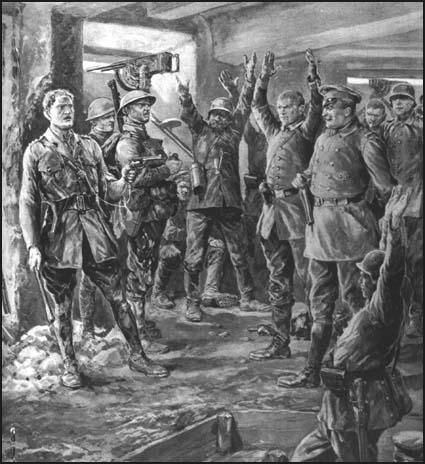Machine-Gun Pillboxes
Pillboxes or blockhouses were miniature forts developed by the German army to give their trench lines extra strength. The term pillbox was used by the British soldiers because the reinforced concrete construction was the same shape as the boxes in which chemists supplied tablets during the war. Pillboxes generally measured 30 ft. along the front and were about 10 ft. wide.
German machine-gunners were often housed inside pillboxes. With very thick walls, they were difficult to destroy by artillery barrages. It was possible to fire through narrow slits in the wall, however, during an enemy offensive, the machine-guns were placed either on the top, or at the side of the pillbox.

The British built very few machine-gun pillboxes. The official reason for not building them was that "such works were not worth the labour or the cost". Probably the real reason was that the High Command feared that if the troops had such solid defences they would be less offensively-minded.
Both sides also used smaller machine-gun posts. The British tended to use Bergmann machine-gun rather than Maxims in these posts. Germans built machine-gun posts in large numbers all along the line at Ypres and Messines.
Machine-gunners were deeply hated by the infantry and they were more likely to be killed when captured than other soldiers.

